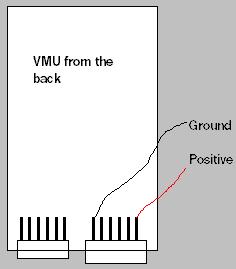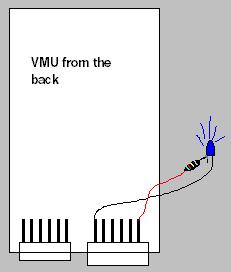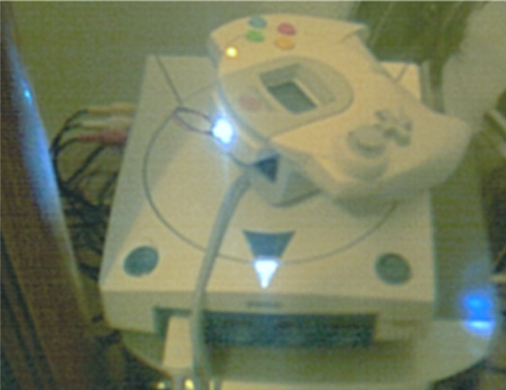Tutorial Name: Dreamcast VMU LED
Download: N/A
Pic: vmu_led_mod1.jpg | vmu_led_mod2.jpg
The Tutorials Model: Dreamcast -Model HKT-3020, and Official Sega controller HKT-7700, and official Sega VMU.
Why should I do this:
This mod just adds class and look to your DC. It especially makes the DC better looking if you have a color scheme, for example my blue scheme, in which you could match an LED to fit the color. I have my DC buttons, controller faceplate and triangle on lid all painted light blue. I replaced the power LED with a ultrbright blue LED, and installed an ultrbright blue LED to the fan vent. With this mod, I added another ultrbright blue LED to my white VMU to match the system. Looks really good.
What you will need:
1. Sega brand VMU
2. Solering iron, and rosin core solder. 60/40 recomended
3. Drill, with bits
4. 5-10 Ohm resistor. I recommend a 10 Ohm resistor if using an LED that runs 4 - 4.5v.
5. 5mm LED, any color, that runs 4 - 4.5v.
6. Thin wire
7. Black tape
8. Superglue
9. Phillips head screwdriver
Aight, Let's Go Dogg:
Ok, start off by removing the four screws holding the VMU together. Carefully remove the back, and pull the speaker off. It's being held on with a sticker type thing. Look at the VMU now with the back removed, making sure the screen is facing down. The first place to solder is in this area.
Look by the area in which the VMU plugs into the controller. You'll want to solder wire for the ground, and positive points to the set of pins on the right. Look at the diagram...

Once you got the wire soldered, you'll need to solder your 5 - 10 OHM resistor to the positive lead from VMU, then to the pos. on the 4.5v LED. Either solder the resistor leg directly to the LED, or to another wire, then to the LED. I did it directly to the LED, and insulated it with black tape so it would touch anything during operation. Make sure you know which leg is pos. Usually the longer leg is pos. on LED's.

Ok, plug the VMU into the controller. Make sure the controller is plugged in, then start the system up. The LED should come on before the Sega screen even thinks about appearing. DON'T try to test it without the resistor in place! You'll blow the F1 resistor on the controller board. That's a whole another tutorial you'll have to find someone else to fix that!
Drilling for Gold! Wait, Just Mounting the LED:
Ok, the LED works like a god, and looks good. We need to mount the mofo! Remove the batteries, then the 2 screws that hold the battery connections from the VMU so we can take out the guts. We are doing this becuase we need to put the whole case back together so we can drill a mounting place for the LED. The LED, no matter what kind you use, will not be able to be placed in the hole, BUT, the wires for it will go through this hole. The LED will have to rest as close to the hole as possible. Why? Because the VMU's board get's in the way. Anyway...
Put the whole case back togeter with the 4 screws and everything, but make sure all the guts are removed. We need to pry the little plastic peice on the bottom out to make room for the LED. Ok, now, start with a small bit, and drill a pilot hole in the center. Make a hole big enough that you know the LED wires will fit in it. Don't make a hole big enough for the actual LED to fit inside.
Remove the 4 screws, and place everything back together. Lay the LED in it's spot, adjusting the wires as you play around. Hold the LED in it's spot while you apply superglue to the BOTTOM of the LED, and wait until the glue is dry enough to hold the LED in place by itself until it's all the way dry. Once the LED is mounted, and not moving, start adjusting the wire to fit around the battery, and not interfere with anything.
Put everything back together, and test one more time. Works! Yeah!
All Done!!!
Here's Mine:

